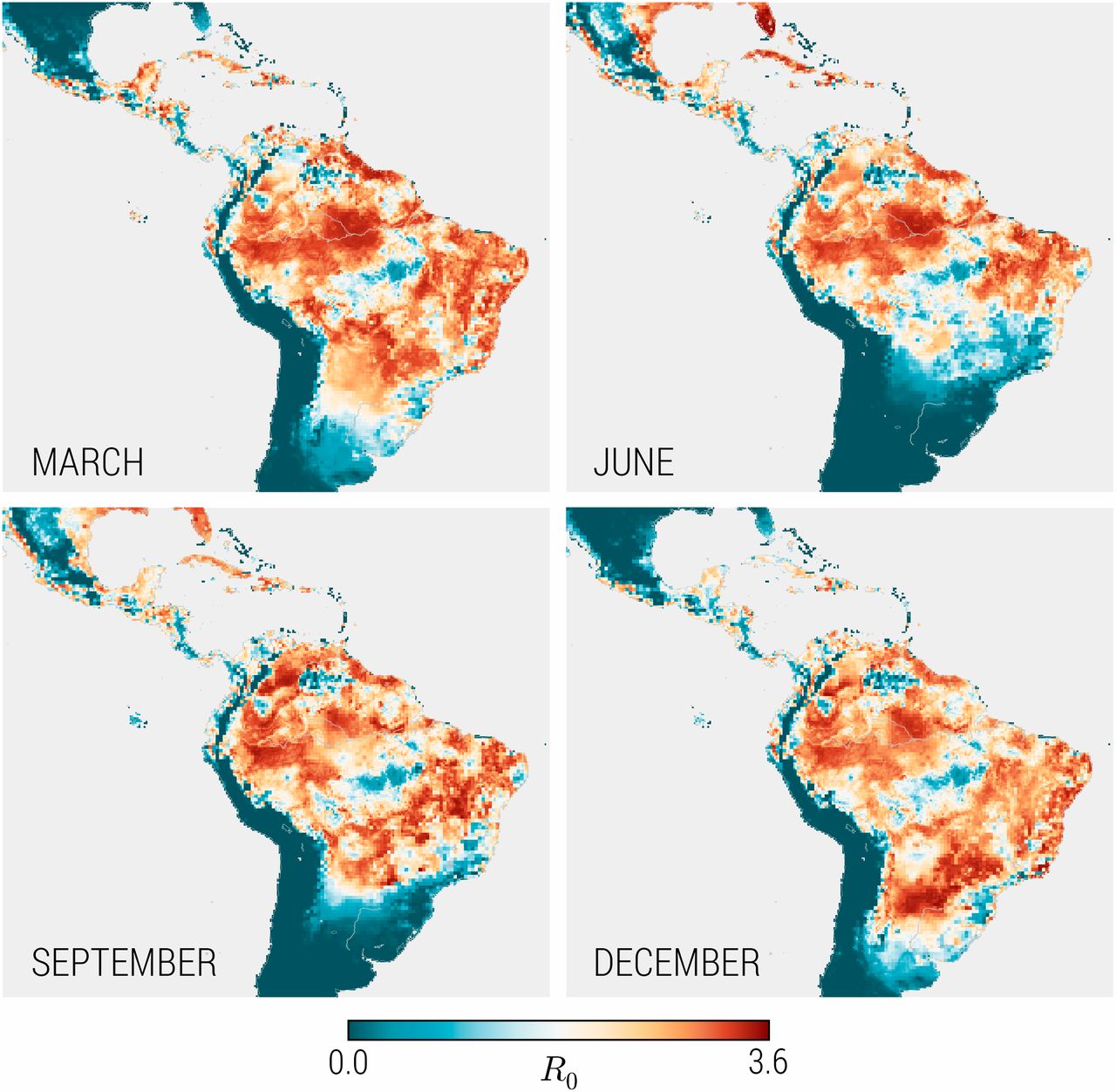Spreading of Zika virus in the Americas
We use a data-driven global stochastic epidemic model to analyze the spread of the Zika virus (ZIKV) in the Americas. The model has high spatial and temporal resolution and integrates real-world demographic, human mobility, socioeconomic, temperature, and vector density data. We estimate that the first introduction of ZIKV to Brazil likely occurred between August 2013 and April 2014 (90% credible interval). We provide simulated epidemic profiles of incident ZIKV infections for several countries in the Americas through February 2017. The ZIKV epidemic is characterized by slow growth and high spatial and seasonal heterogeneity, attributable to the dynamics of the mosquito vector and to the characteristics and mobility of the human populations. We project the expected timing and number of pregnancies infected with ZIKV during the first trimester and provide estimates of microcephaly cases assuming different levels of risk as reported in empirical retrospective studies. Our approach represents a modeling effort aimed at understanding the potential magnitude and timing of the ZIKV epidemic and it can be potentially used as a template for the analysis of future mosquito-borne epidemics. Read the full paper.
Schematic representation of the integration of data layers and the computational flow chart defining the GLEAM model for ZIKV.


